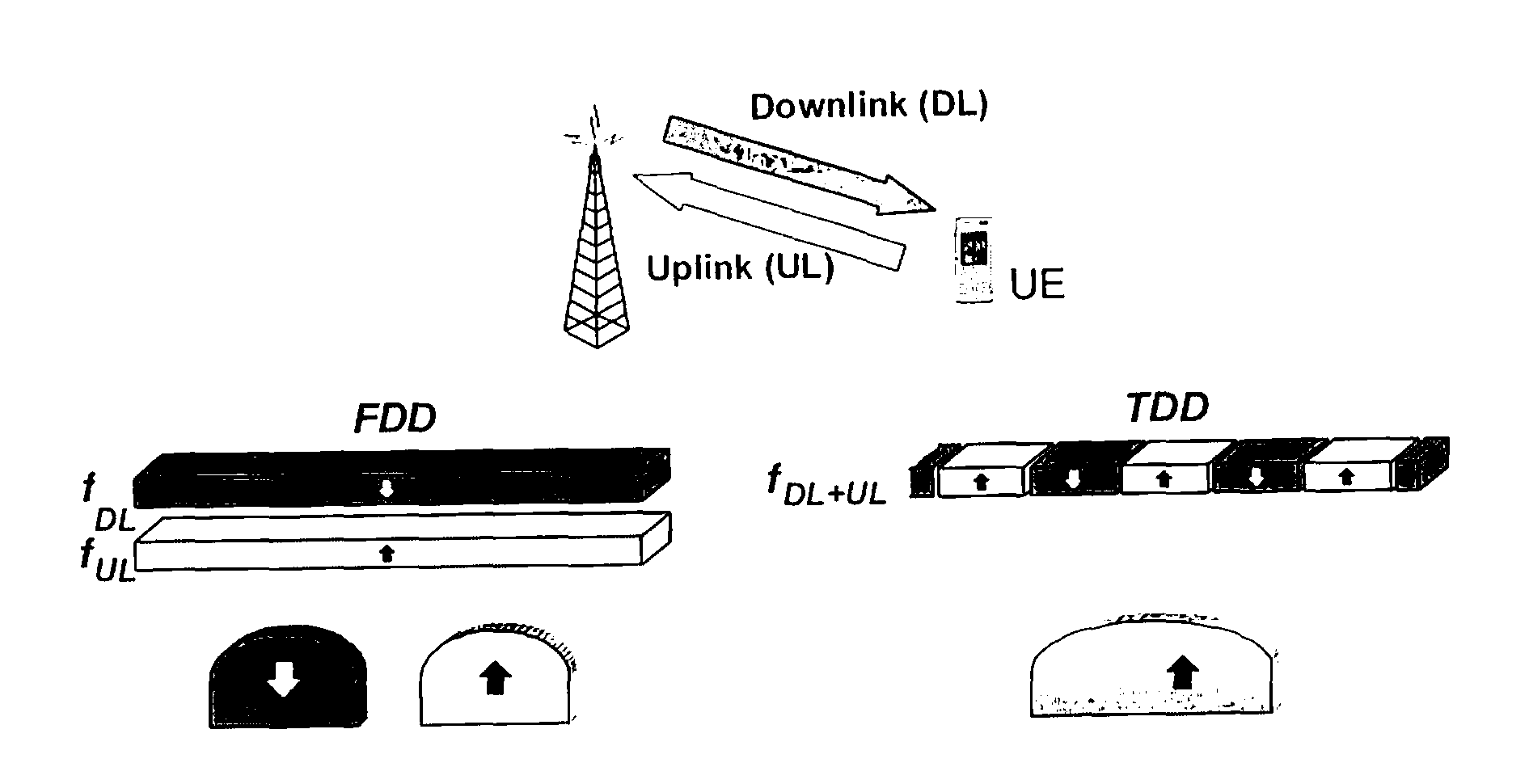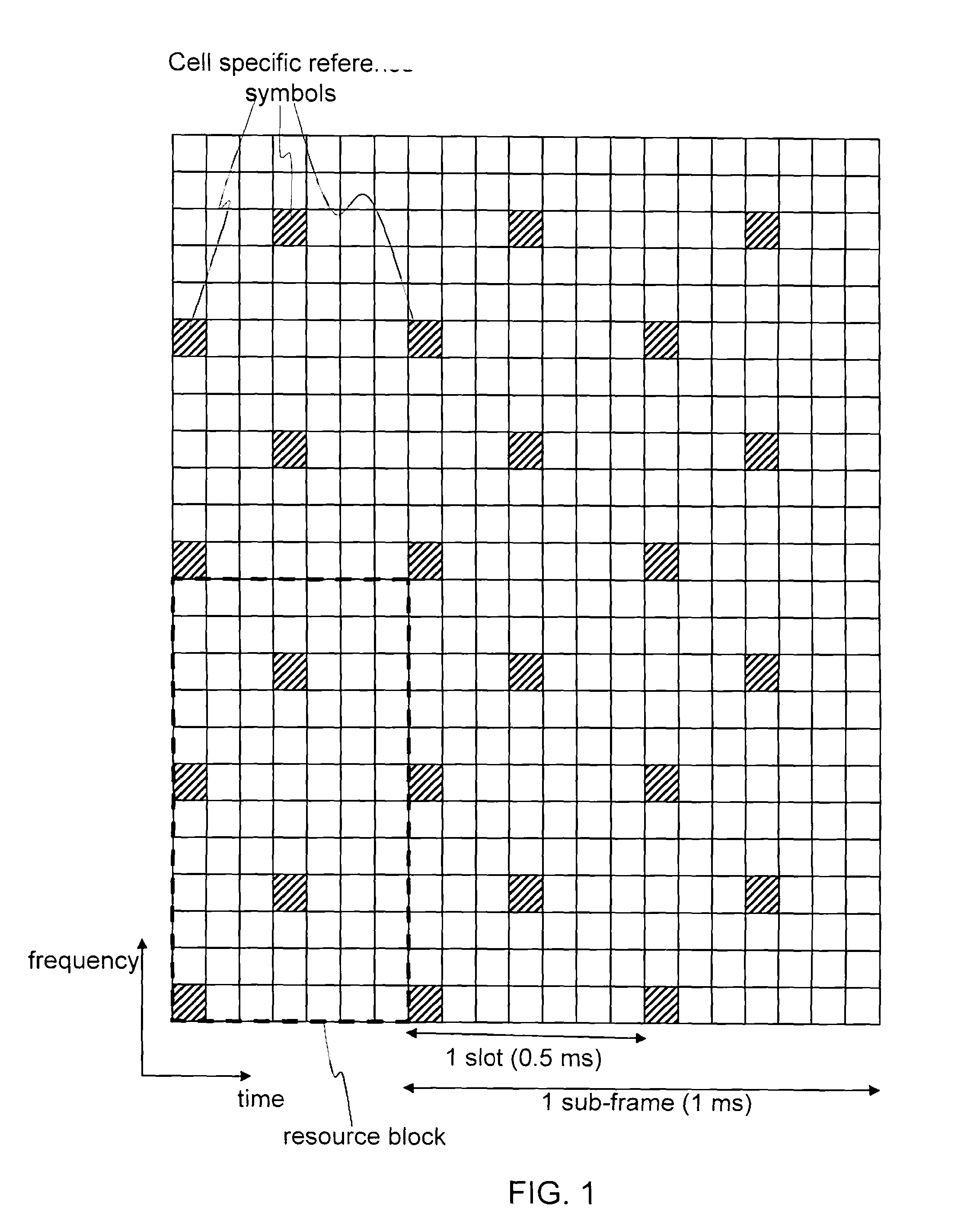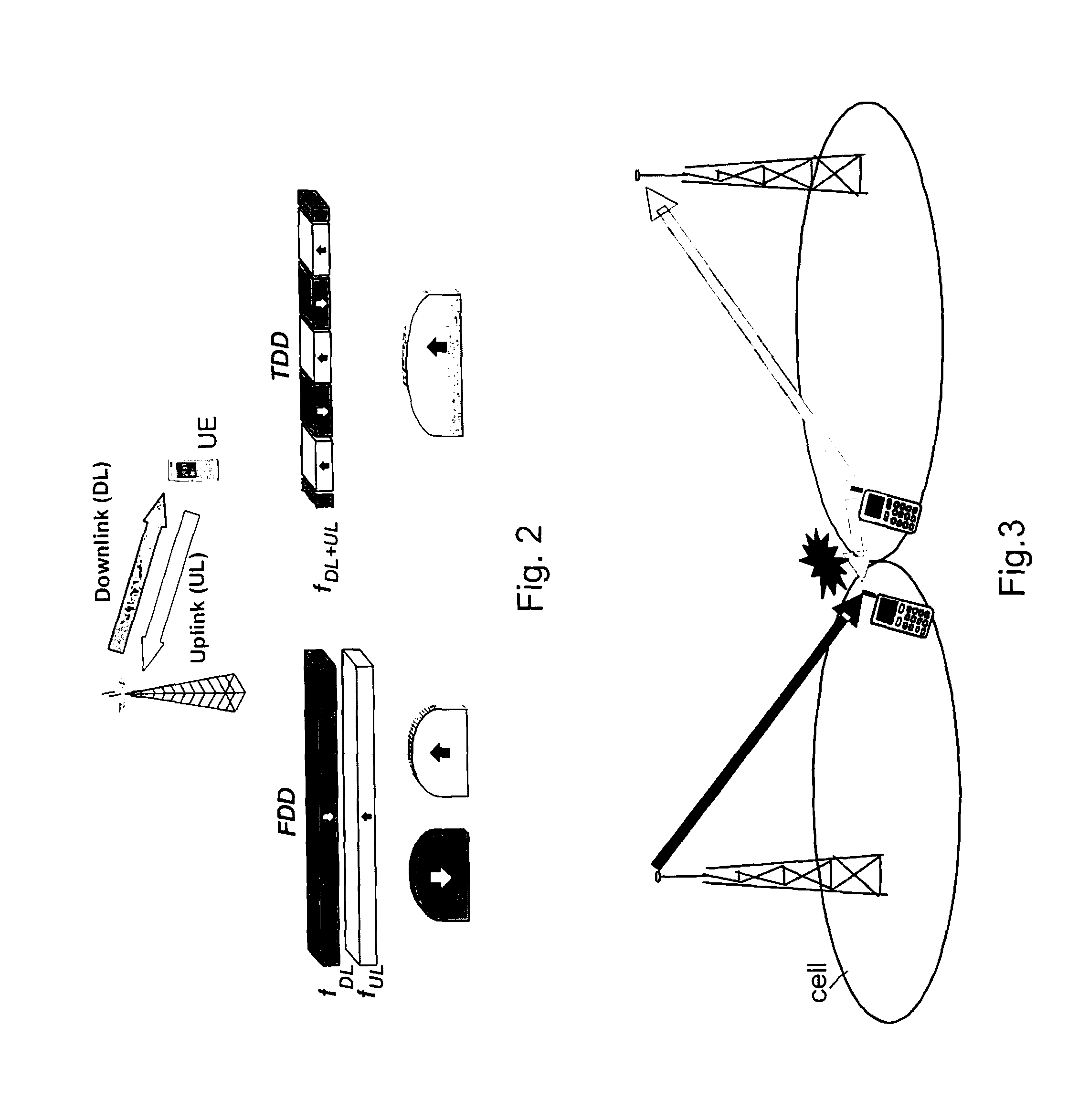Information on Reference Signal Structure for Neighboring Cell Measurements
a neighboring cell and information technology, applied in the field of cellular radio communication, can solve the problems of extremely high values and limited multi-cell broadcast/multicast capacity, and achieve the effect of accurate detection of reference signals
- Summary
- Abstract
- Description
- Claims
- Application Information
AI Technical Summary
Benefits of technology
Problems solved by technology
Method used
Image
Examples
Embodiment Construction
[0031]For neighbour cell measurements the cell specific reference signal shall be used. Informing of the reference signal structure to be used for neighbouring cells measurement separately from the configuration in the serving cell provides several benefits.
[0032]MBSFN transmissions in neighboring cells may use different sub-frames without affecting the possibility to perform accurate neighboring cell measurements. Although using time aligned transmissions for MBSFN is useful in case the full benefits of MBSFN are to be exploited, at the border between different MBSFN regions this is not the case. The invention makes it possible to set up different regions of broadcasting the same MBSFN data. Within a region the same sub-frame allocation is used for broadcasting the MBSFN data. Thereby the broadcasting of information of interest only in a specific geographical area can be restricted to that area. FIG. 5 illustrates a number of cells spread in the geography, some of them included in ...
PUM
 Login to View More
Login to View More Abstract
Description
Claims
Application Information
 Login to View More
Login to View More - R&D
- Intellectual Property
- Life Sciences
- Materials
- Tech Scout
- Unparalleled Data Quality
- Higher Quality Content
- 60% Fewer Hallucinations
Browse by: Latest US Patents, China's latest patents, Technical Efficacy Thesaurus, Application Domain, Technology Topic, Popular Technical Reports.
© 2025 PatSnap. All rights reserved.Legal|Privacy policy|Modern Slavery Act Transparency Statement|Sitemap|About US| Contact US: help@patsnap.com



